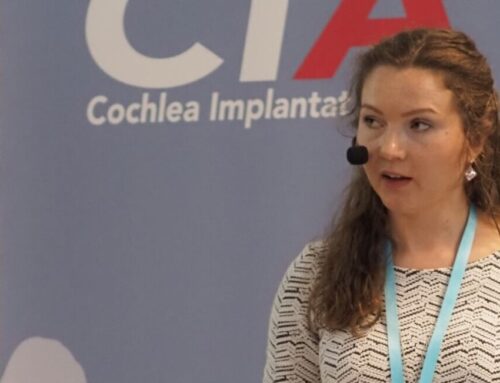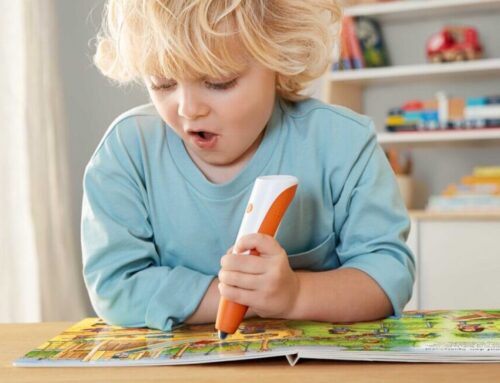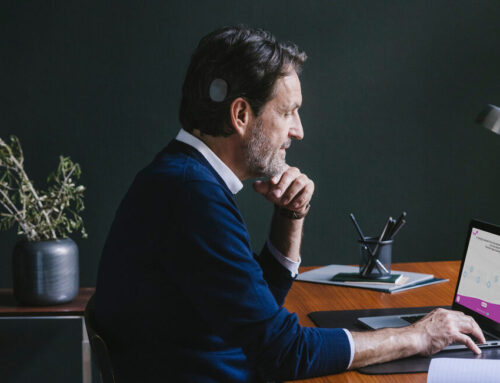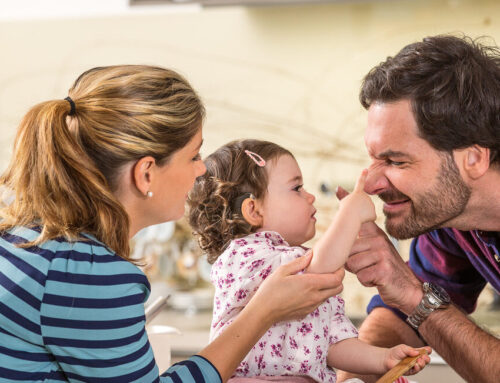How can parents prepare their child for cochlear implantation?
The decision to have an implant is a big event for the family. How can parents support their child during this time?
Ulrike Berndorfer
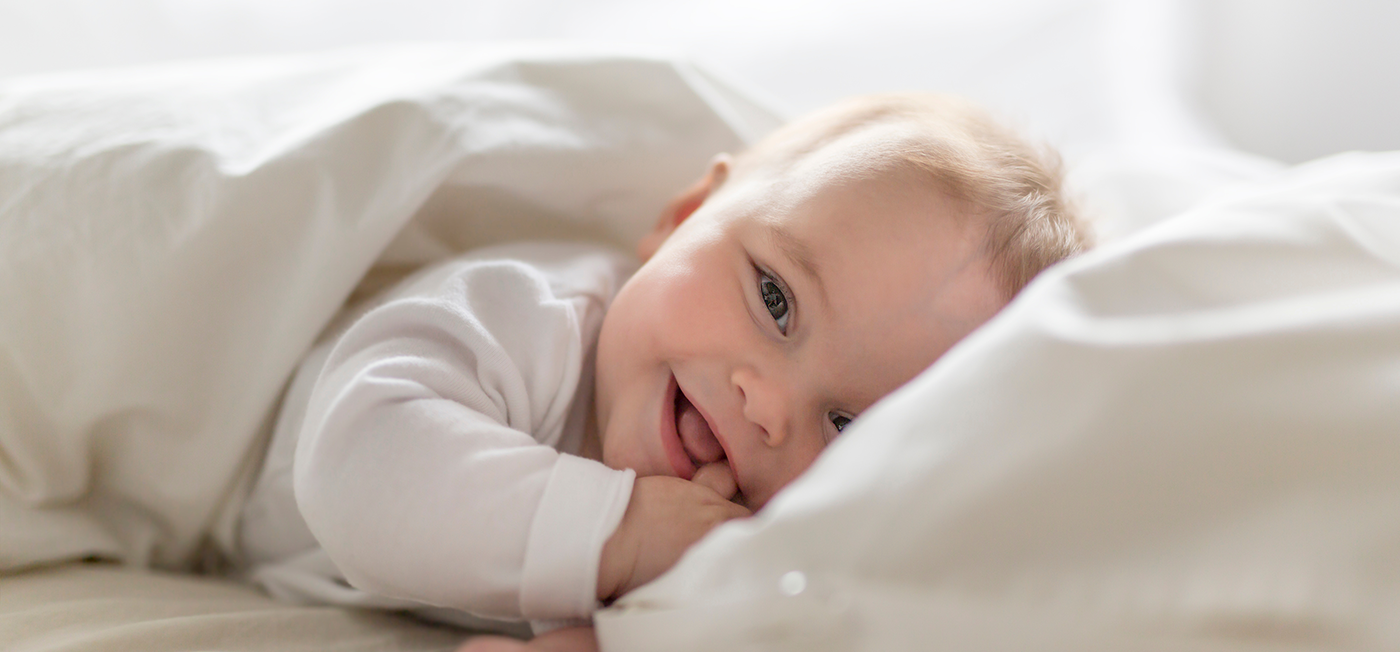
In the run-up to a child's cochlear implantation, parents need to gather a lot of information and attend appointments with the child. Parents have to make a decision for their child that is challenging for the whole family. Emotions play an important role in the diagnosis and processing phase: What happens next?
What can we do?
It is important to focus on the child: they experience many defining impressions before, during and after the implantation and initial adaptation period. Parents can support their child well during this stage of development.
Maintain rituals during the preparation period
A lot of children are still very young - usually under one year old - when they receive their hearing implant. Linguistic preparation for the event is not possible at this age. Children therefore need the support of their closest caregivers during this time.
Rituals and habits that the child has already learned at this age give the child security and confidence. It is essential to maintain this stability during this time. Therefore, no changes to the child's everyday life should be planned before the implantation: no weaning, weaning off the pacifier, moving the sleeping place to the child's own bed or similar.
Many concerns relating to the operation can be clarified in advance during the consultation with the doctor. We recommend that families make a list of questions on their mobile device: a paper note is easily forgotten or misplaced. A clear idea of the procedure gives parents peace of mind.
Finding peace in unfamiliar surroundings
Parents know their children best and know how to calm them down. Some children need physical contact, others want to be breastfed or are best soothed with a pacifier. Singing and rocking, stroking, carrying, cuddling with a favorite animal are examples of rituals that are familiar to the child and help them to process emotional impressions. Familiar smells also provide reassurance in a new environment. The child's own pyjamas, a cuddly blanket, a favorite animal, mummy's scarf etc. can create memories of a familiar environment and make it easier to relax.
One or two favorite toys and picture books that the child knows from everyday rituals at home can accompany them to the hospital. Providing them with beloved toys can also encourage and distract them. Some children enjoy cuddling and reading books, others are quickly active again and need playtime.
Some parents like to get a new toy to make the stay in the hospital easier. The child sees it as a "little gift". The child's interests and preferences help with the selection. Play materials that stimulate motor activity in particular are popular with young children, such as throwing and clearing games. The more flexibly simple play materials can be used, the more creatively the child will engage with them. The stacking cup set with various shapes and small figures can be used for stacking, clearing out, putting things away, playing hide and seek, etc., while plastic or wooden play materials can be easily cleaned after a stay in hospital.
A hairy affair: the suture
Parents prepare their child in different ways for the upcoming suture on the head. Some parents arrange to have their child's hair cut themselves before the operation. Other parents agree with the surgeon that the hairline will be shaved immediately before the operation. This varies greatly from person to person and is always discussed with the medical team at the clinic. Bear in mind that the child will not be able to wash their hair for a few days after the operation.
The child must also wear a head bandage for the first few days after the operation. This protects the surgical suture. Parents are asked to ensure that the child does not remove the bandage. However, we hear from parents that the head bandage is stable and is accepted relatively quickly by the child. After a few days, the doctor checks the suture and the child then only wears the suture plaster behind the ear. For most children, this is already the case when they are discharged home. The plaster then comes off by itself when the wound has healed sufficiently. However, be sure to ask the medical team how you can organize personal hygiene at home during this time.
Processing your experiences together
Take photos of the time in the hospital and afterwards. If the child is older, you can talk about the experience together and help the child to verbalize the experience. The decision to have a cochlear implant is a life decision: Your child will certainly be interested later in how this important stage of life "I can hear" began.
Have confidence in your decision. Your positive attitude will give your child a sense of security and confidence in the opportunity to hear. Children have very fine antennae and can sense their parents' emotions. Your positive mood is transferred to your child and supports them in the development process of learning to hear.
After the discharge, parents must take their child to the clinic for a check-up, where the sutures are checked. As a rule, the stitches are self-dissolving and do not need to be removed. The doctor in charge will inform the parents about this.
Exciting times are on the way!
A few weeks after the operation, the outer part of the cochlear implant is activated: the "first fitting"; an emotional and exciting moment for parents. The cochlear implant is activated gradually. This is necessary as your child is learning to hear.
Children's initial reactions vary greatly and depend on various preconditions: Has the child had previous hearing experience? How can they deal with the new listening knowledge? In any case, the first fitting is the start of a new stage of development and the beginning of the child's so-called hearing age. An exciting time lies ahead for the family!



